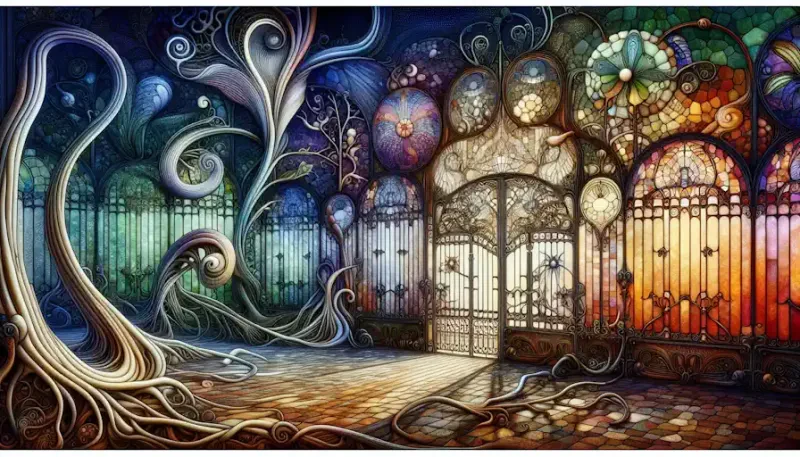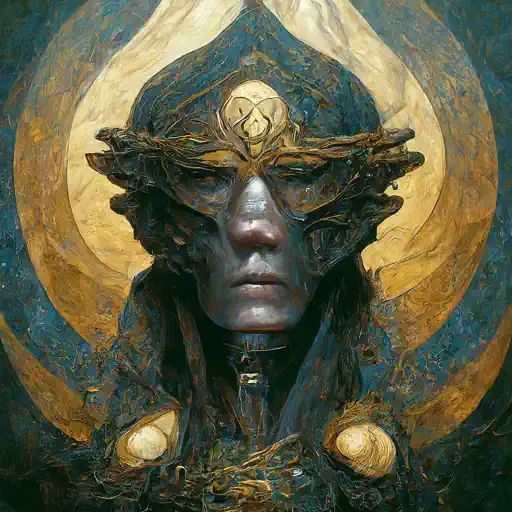Introduction
The National Gallery of Art stands as a bastion of artistic excellence and cultural heritage within the heart of Washington, D.C., serving as a beacon for art enthusiasts, scholars, and curious visitors alike. Founded in 1937, the museum holds a paramount position in the landscape of American museums, boasting a rich history, unparalleled collections, and a commitment to fostering appreciation and understanding of the visual arts.
Brief Overview of the National Gallery of Art
Nestled majestically on the National Mall, the National Gallery of Art commands attention with its neoclassical façade, designed by architect John Russell Pope. The museum's origins trace back to the vision of Andrew W. Mellon, a prominent financier and art collector, who donated his substantial art collection and provided funding for the museum's construction. This act of philanthropy laid the foundation for what would become one of the preeminent art institutions in the world.
From its inception, the National Gallery of Art has been dedicated to the preservation, study, and appreciation of art across cultures and time periods. Its mission encompasses not only the display of masterpieces but also the advancement of scholarship, the enrichment of public education, and the promotion of cultural exchange.
Importance of the Museum in the Art World
As a nexus of artistic expression and historical narrative, the National Gallery of Art holds immense significance within the global art community. Its collection spans the breadth of human creativity, encompassing works from the Middle Ages to the present day, and representing diverse cultures from around the world. From iconic paintings by Renaissance masters such as Leonardo da Vinci and Raphael to groundbreaking contemporary artworks, the museum's holdings reflect the vast tapestry of human artistic achievement.
Beyond its role as a repository of artistic treasures, the National Gallery of Art serves as a catalyst for scholarly inquiry and artistic innovation. Through exhibitions, research initiatives, and educational programs, the museum fosters dialogue and discovery, pushing the boundaries of artistic discourse and challenging visitors to engage with art in new and meaningful ways.
Purpose of the Article
In this article, we embark on a journey to explore the multifaceted allure of the National Gallery of Art, delving into its storied history, architectural splendor, renowned collections, and profound impact on culture and society. By examining the museum's evolution, accomplishments, and ongoing initiatives, we aim to illuminate the enduring legacy of this cultural institution and inspire readers to discover the beauty and power of art within its hallowed halls.
History of the National Gallery of Art
The genesis of the National Gallery of Art traces back to a pivotal moment in American history, marked by the economic turmoil of the Great Depression and the burgeoning cultural aspirations of the nation. In 1937, Congress passed legislation establishing the museum as a gift to the American people, with funds provided by Andrew W. Mellon, one of the wealthiest men of his time and a passionate art collector. Mellon's generous donation of his extensive art collection, along with an endowment to support the museum's operations, laid the groundwork for the establishment of an institution dedicated to the preservation and celebration of art.
Founding and Establishment
The founding of the National Gallery of Art was not merely an act of philanthropy but also a strategic investment in the cultural future of the United States. Mellon, a staunch advocate for the arts, believed fervently in the transformative power of art to uplift society and foster a deeper understanding of human experience. His vision for the museum was ambitious yet visionary, aiming to create a world-class institution that would rival the great museums of Europe.
With the support of President Franklin D. Roosevelt and influential figures in the art world, Mellon's dream became a reality. Construction of the museum commenced in 1937, following the designs of architect John Russell Pope, whose neoclassical masterpiece would come to symbolize the grandeur and permanence of American democracy.
Key Figures Involved in Its Creation
The realization of the National Gallery of Art owed much to the dedication and foresight of several key individuals who played pivotal roles in its creation. Foremost among them was Andrew W. Mellon himself, whose unparalleled art collection formed the nucleus of the museum's holdings and whose financial contributions ensured its viability for generations to come. Mellon's unwavering commitment to the arts, coupled with his influence in political and cultural circles, provided the momentum necessary to propel the museum forward despite the challenges of its early years.
Equally instrumental was the collaboration between Mellon and his close confidante, Samuel H. Kress, another prominent art collector and philanthropist. Together, Mellon and Kress worked tirelessly to acquire artworks for the museum's collection, leveraging their wealth and connections to secure masterpieces from Europe and beyond. Their partnership laid the groundwork for the museum's reputation as a premier destination for art lovers and scholars alike.
Evolution of the Museum Over Time
Since its inauguration in 1941, the National Gallery of Art has undergone significant evolution, expanding its collections, diversifying its exhibitions, and embracing new technologies to enhance the visitor experience. Over the decades, the museum has weathered periods of war, social upheaval, and shifting cultural tastes, yet its commitment to excellence and innovation has remained steadfast.
From the establishment of its iconic West Building to the addition of the modernist East Building designed by I.M. Pei, the museum has continued to grow and adapt to the changing needs of its audience. Today, the National Gallery of Art stands as a testament to the enduring power of art to inspire, enlighten, and unite people from all walks of life, preserving the treasures of the past while charting a course for the future.
Architecture and Design
The architectural splendor of the National Gallery of Art is a testament to the enduring legacy of classical aesthetics and the vision of its designers. From its stately neoclassical façade to its sleek modernist extensions, the museum's architecture embodies a harmonious blend of tradition and innovation, serving as a fitting backdrop for the masterpieces within.
Description of the Building's Architecture
The National Gallery of Art is renowned for its iconic architectural features, most notably the majestic West Building, which houses the museum's principal collections. Designed by architect John Russell Pope in the neoclassical style, the West Building exudes an air of grandeur and elegance, with its imposing marble façade, majestic columns, and intricately carved pediments.
Inside, visitors are greeted by a series of soaring galleries adorned with vaulted ceilings, marble floors, and ornate moldings, creating an atmosphere of timeless beauty and sophistication. The building's layout reflects Pope's reverence for classical proportions and symmetry, with galleries arranged in a logical sequence to facilitate the viewing of artworks in a coherent and contemplative manner.
In contrast to the West Building's classical opulence, the East Building, designed by renowned architect I.M. Pei, represents a bold departure from tradition. Completed in 1978, the East Building is characterized by its geometric forms, dramatic angles, and innovative use of materials such as glass and steel. Its striking design serves as a dynamic counterpart to the classical symmetry of the West Building, offering visitors a juxtaposition of old and new, tradition and modernity.
Notable Features and Elements of the Design
Among the most notable features of the National Gallery of Art's architecture are its magnificent rotunda and central atrium, which serve as focal points for the museum's vast collections. The rotunda, located at the heart of the West Building, features a soaring dome adorned with intricate murals depicting scenes from Greek mythology, while the atrium of the East Building showcases Pei's signature geometric forms and spatial arrangements.
Throughout both buildings, visitors encounter a series of intimate galleries and alcoves, each meticulously designed to showcase works of art in optimal lighting and spatial conditions. From the intimate charm of the Dutch Cabinet Galleries to the expansive vistas of the Sculpture Garden, every space within the museum is crafted with care and attention to detail, inviting visitors to embark on a journey of discovery and exploration.
Influence on Subsequent Museum Architecture
The architectural legacy of the National Gallery of Art extends far beyond its physical confines, serving as a touchstone for generations of museum architects and designers around the world. Pope's classical design has inspired countless imitations and adaptations, while Pei's innovative approach to form and space has revolutionized the way museums are conceived and constructed.
From the Louvre Pyramid in Paris to the Guggenheim Museum in Bilbao, the influence of the National Gallery of Art can be seen in the design of museums and cultural institutions across the globe. Its timeless beauty and enduring relevance serve as a testament to the power of architecture to shape our perceptions of art, culture, and society, leaving an indelible mark on the world of museum architecture for generations to come.
Permanent Collection
At the heart of the National Gallery of Art lies its esteemed permanent collection, a treasure trove of artistic masterpieces spanning centuries and continents. Encompassing works from the dawn of civilization to the present day, the museum's collection offers a panoramic view of human creativity and ingenuity, inviting visitors to embark on a journey through the annals of art history.
Overview of the Artworks Housed in the Museum
The National Gallery of Art's permanent collection is a testament to the richness and diversity of the human artistic experience, featuring a comprehensive array of paintings, sculptures, decorative arts, and works on paper. From iconic masterpieces by renowned artists to lesser-known gems waiting to be discovered, the museum's holdings reflect the full spectrum of artistic expression and innovation.
Highlights of the collection include works by celebrated European masters such as Leonardo da Vinci, Rembrandt van Rijn, and Vincent van Gogh, whose timeless creations continue to captivate audiences with their beauty and depth. Equally impressive are the museum's holdings of American art, which encompass everything from colonial portraits to modernist masterpieces, providing a comprehensive overview of the nation's artistic heritage.
In addition to its renowned paintings and sculptures, the National Gallery of Art is home to a vast array of decorative arts, including exquisite examples of furniture, ceramics, textiles, and metalwork. These objects offer insight into the material culture of past civilizations and provide a glimpse into the lives and tastes of their creators.
Highlights of the Collection
Among the most beloved treasures of the National Gallery of Art are its iconic masterpieces, which rank among the greatest achievements of human creativity. From the enigmatic smile of Leonardo da Vinci's "Mona Lisa" to the majestic splendor of Johannes Vermeer's "Girl with a Pearl Earring," these works have become synonymous with the museum's identity and draw visitors from around the world to marvel at their beauty.
Other notable highlights of the collection include Rembrandt's haunting self-portraits, Michelangelo's sublime sculptures, and Monet's luminous landscapes, each offering a window into the artist's unique vision and worldview. These works, along with countless others in the museum's collection, serve as touchstones for artistic excellence and enduring sources of inspiration for generations to come.
Significance of Specific Pieces
Beyond their aesthetic appeal, the artworks housed in the National Gallery of Art possess profound cultural, historical, and scholarly significance, enriching our understanding of the past and illuminating the complexities of the human condition. Whether exploring the intricacies of religious devotion in Fra Angelico's "Annunciation" or grappling with the horrors of war in Picasso's "Guernica," each work offers a unique perspective on the world and challenges viewers to engage with art in a deeper and more meaningful way.
Moreover, the museum's commitment to conservation and scholarship ensures the preservation and study of these invaluable treasures for future generations. Through ongoing research initiatives, conservation projects, and educational programs, the National Gallery of Art continues to unlock the secrets of its collection and share its riches with audiences far and wide, ensuring that the legacy of these extraordinary artworks endures for centuries to come.
Special Exhibitions
In addition to its esteemed permanent collection, the National Gallery of Art presents a dynamic array of special exhibitions that showcase the breadth and depth of human artistic achievement. These temporary displays offer visitors the opportunity to explore new themes, discover lesser-known artists, and engage with artworks in innovative ways, enriching their museum experience and fostering a deeper appreciation for the visual arts.
Explanation of the Museum's Temporary Exhibitions
The National Gallery of Art's special exhibitions cover a wide range of topics, genres, and time periods, providing a diverse array of perspectives on art and culture. From comprehensive retrospectives of individual artists to thematic surveys of specific movements or styles, each exhibition offers a unique lens through which to view the world and explore the complexities of human creativity.
Curated by the museum's team of expert scholars and curators, these exhibitions draw upon the museum's vast resources and network of collaborators to bring together artworks from around the globe, offering visitors the opportunity to encounter rare treasures and groundbreaking discoveries firsthand. Through thoughtful curation and innovative presentation, the National Gallery of Art seeks to illuminate the connections between past and present, tradition and innovation, fostering dialogue and discovery among its diverse audience.
Recent or Upcoming Exhibitions of Note
In recent years, the National Gallery of Art has hosted a series of acclaimed exhibitions that have captivated audiences and garnered critical acclaim. From groundbreaking surveys of underrepresented artists to immersive multimedia installations, these exhibitions have pushed the boundaries of artistic expression and challenged visitors to see the world in new and unexpected ways.
Upcoming exhibitions promise to continue this tradition of excellence, offering visitors the opportunity to explore a diverse range of topics and themes. From explorations of environmental activism in contemporary art to retrospectives of influential female artists, these exhibitions promise to captivate, inspire, and provoke thought, inviting visitors to engage with art in new and meaningful ways.
Impact of Special Exhibitions on the Museum's Visitors
The impact of special exhibitions extends far beyond the walls of the museum, shaping the cultural landscape and leaving a lasting impression on visitors long after they have left the galleries. Through immersive experiences, interactive programming, and educational initiatives, these exhibitions foster a deeper understanding of art and its role in society, sparking conversation, igniting imagination, and fostering a sense of connection among diverse audiences.
Moreover, special exhibitions serve as catalysts for scholarship and research, generating new insights and discoveries that contribute to our collective understanding of art history and culture. By bringing together artworks from diverse traditions and time periods, these exhibitions offer a panoramic view of human creativity and ingenuity, celebrating the rich tapestry of human experience and inspiring future generations of artists, scholars, and enthusiasts.
Educational Programs
The National Gallery of Art is committed to providing engaging and enriching educational experiences for visitors of all ages and backgrounds. Through a diverse array of programs and initiatives, the museum seeks to foster a deeper understanding and appreciation of art, while empowering individuals to explore their own creativity and curiosity.
Overview of Educational Initiatives Offered by the Museum
The museum's educational programs encompass a wide range of offerings, including guided tours, lectures, workshops, family activities, and digital resources. These programs are designed to cater to diverse interests and learning styles, providing opportunities for visitors to engage with art in meaningful and transformative ways.
Guided tours offer visitors the chance to explore the museum's collections with knowledgeable docents who provide insights into the artworks on display, while lectures and workshops delve deeper into specific themes, artists, or periods in art history. Family activities, such as art-making workshops and storytelling sessions, encourage intergenerational learning and creativity, fostering a love of art from an early age.
In addition to on-site programming, the National Gallery of Art offers a wealth of digital resources, including online exhibitions, virtual tours, educational videos, and interactive learning modules. These resources provide access to the museum's collections and expertise to audiences around the world, allowing individuals to engage with art on their own terms and at their own pace.
Programs for Schools and Educators
The National Gallery of Art is a vital resource for educators and students, offering a variety of programs and resources designed to support classroom learning and enhance arts education. Teacher workshops provide educators with strategies for integrating art into their curriculum, while school tours offer students the opportunity to experience the museum's collections firsthand and engage in hands-on learning activities.
The museum also partners with schools and educational organizations to develop customized programs tailored to the needs and interests of specific student populations. These programs may include artist residencies, community outreach initiatives, and collaborative projects that encourage creativity, critical thinking, and collaboration among students and educators alike.
In addition, the National Gallery of Art offers a range of online resources for educators, including lesson plans, teaching guides, and multimedia presentations that align with national and state learning standards. These resources provide educators with the tools they need to incorporate art into their teaching practice and inspire their students to explore the world through the lens of art.
Public Engagement Activities
Public engagement is at the heart of the National Gallery of Art's mission, and the museum offers a variety of programs and activities designed to engage audiences of all ages and backgrounds. From artist talks and panel discussions to film screenings and performances, these events provide opportunities for visitors to connect with art in new and unexpected ways, while fostering a sense of community and belonging.
The museum also hosts special events throughout the year, including festivals, concerts, and celebrations that celebrate the diversity of artistic expression and cultural heritage. These events bring together artists, scholars, and enthusiasts from around the world to share their passion for art and engage in dialogue about its role in society.
Moreover, the National Gallery of Art is committed to accessibility and inclusion, and offers a range of programs and services for visitors with disabilities. These may include audio-described tours, tactile experiences, and assistive technology to ensure that all visitors can fully participate in and enjoy their museum experience.
Through its educational programs and public engagement activities, the National Gallery of Art seeks to inspire curiosity, spark creativity, and foster a lifelong love of art among audiences of all ages and backgrounds. By providing meaningful opportunities for learning, exploration, and discovery, the museum aims to empower individuals to connect with art in profound and transformative ways, enriching their lives and enhancing their understanding of the world around them.
Conservation Efforts
Preservation and stewardship lie at the core of the National Gallery of Art's mission, and the museum is dedicated to safeguarding its priceless collection for future generations. Through a comprehensive program of conservation and restoration, the museum's team of experts works tirelessly to ensure the longevity and integrity of its artworks, while advancing our understanding of materials, techniques, and artistic intent.
Discussion of the Museum's Conservation Practices
The National Gallery of Art's conservation program encompasses a wide range of activities, including examination, documentation, treatment, and preventive care. Conservation scientists, conservators, and technicians collaborate closely to study artworks using state-of-the-art tools and techniques, such as imaging, spectroscopy, and microscopy, to analyze materials and detect signs of deterioration.
Once artworks have been thoroughly examined, conservators develop customized treatment plans tailored to the specific needs of each object. These treatments may include cleaning, structural repairs, inpainting, and stabilization, all carried out with the utmost care and respect for the artist's original intentions. In some cases, advanced imaging technologies and digital restoration techniques may be employed to reveal hidden details or reconstruct damaged areas.
Preventive conservation is also a key component of the museum's approach to preservation, and the museum takes proactive measures to protect artworks from environmental hazards, such as light, temperature, and humidity fluctuations. Storage and display conditions are carefully monitored and controlled to minimize the risk of damage, while security measures ensure the physical security of the collection.
Preservation Efforts for Artworks in the Collection
The National Gallery of Art's conservation efforts extend to every corner of its vast collection, from delicate drawings and prints to monumental sculptures and architectural fragments. Each artwork presents its own set of challenges and conservation needs, requiring a tailored approach informed by careful study, research, and collaboration.
One of the museum's most ambitious conservation projects in recent years has been the restoration of Leonardo da Vinci's "Ginevra de' Benci," a masterpiece of Renaissance portraiture. Over the course of several years, conservators painstakingly cleaned and stabilized the painting, revealing new details and insights into Leonardo's technique and artistic process.
In addition to individual artworks, the museum's conservation team also oversees the care and maintenance of its historic buildings and outdoor spaces, ensuring that these architectural treasures remain intact for future generations to enjoy. From the marble façade of the West Building to the reflective surface of the Reflecting Pool, every element of the museum's physical environment is subject to careful scrutiny and maintenance.
Collaborations with Other Institutions on Conservation Projects
Collaboration is central to the National Gallery of Art's conservation efforts, and the museum works closely with other institutions, both domestically and internationally, to share expertise, resources, and best practices. These collaborations may take many forms, including joint research projects, exchange programs, and training opportunities for emerging conservators.
One notable example of collaboration is the museum's partnership with the Getty Conservation Institute on the conservation of Jackson Pollock's "Mural," a monumental painting that underwent extensive treatment to address issues of flaking paint and structural instability. Through a combination of scientific analysis, meticulous inpainting, and innovative conservation techniques, the painting was restored to its original splendor, ensuring its continued enjoyment by future generations.
By collaborating with other institutions and sharing knowledge and expertise, the National Gallery of Art seeks to advance the field of conservation and contribute to the preservation of our cultural heritage for the benefit of all. Through ongoing research, education, and outreach, the museum strives to ensure that the treasures of the past remain vibrant and accessible for generations to come, enriching our understanding of the human experience and inspiring future artistic endeavors.
Outreach and Accessibility
The National Gallery of Art is committed to ensuring that its treasures are accessible to all, regardless of age, background, or ability. Through a variety of outreach programs and accessibility initiatives, the museum strives to create an inclusive environment where everyone can feel welcome and empowered to engage with art in meaningful ways.
Efforts to Make the Museum Accessible to Diverse Audiences
The National Gallery of Art recognizes the importance of diversity and inclusion in its programming and outreach efforts. The museum works actively to engage with diverse communities and audiences, including individuals from underserved populations, minority groups, and marginalized communities.
To reach these audiences, the museum offers a range of targeted programs and initiatives, such as community outreach events, multicultural festivals, and partnerships with local organizations. These efforts are designed to break down barriers to access and create opportunities for people from all walks of life to experience the transformative power of art.
In addition to its on-site programming, the National Gallery of Art also strives to make its digital resources and online exhibitions accessible to everyone. The museum's website features a variety of tools and features designed to accommodate individuals with disabilities, including screen readers, captioning, and alternative text for images.
Initiatives for Visitors with Disabilities
Accessibility is a top priority for the National Gallery of Art, and the museum offers a range of services and accommodations to ensure that visitors with disabilities can fully enjoy their museum experience. These services may include wheelchair-accessible entrances, elevators, and restrooms, as well as assistive listening devices and tactile maps for individuals with visual impairments.
In addition, the museum offers specialized tours and programs for visitors with disabilities, led by trained staff who are knowledgeable about accessibility issues and sensitive to the needs of diverse audiences. These tours may incorporate verbal descriptions, tactile experiences, and multisensory activities to enhance engagement and comprehension.
The National Gallery of Art also partners with organizations that serve individuals with disabilities to develop tailored programming and resources. These partnerships may include collaborative exhibitions, workshops, and events designed to foster inclusion and create meaningful experiences for participants of all abilities.
Community Engagement Programs
Community engagement is central to the National Gallery of Art's mission, and the museum actively seeks to build relationships with its surrounding community through a variety of programs and initiatives. These may include outreach events, cultural festivals, and educational partnerships with local schools and organizations.
One example of the museum's community engagement efforts is its Art Around the Corner program, which brings art-making activities and interactive experiences to neighborhoods throughout the Washington, D.C., area. Through this program, the museum aims to foster connections with residents and families, inspire creativity, and spark interest in the visual arts.
In addition, the National Gallery of Art offers a variety of programs and resources for educators, including professional development workshops, teaching materials, and curriculum guides. These resources are designed to support arts education in schools and empower educators to integrate art into their teaching practice, enriching the lives of students and fostering a lifelong appreciation for the arts.
Through its outreach and accessibility initiatives, the National Gallery of Art seeks to create a welcoming and inclusive environment where everyone can explore, learn, and be inspired by art. By reaching out to diverse audiences and breaking down barriers to access, the museum strives to ensure that its treasures are enjoyed and appreciated by people of all backgrounds and abilities, enriching the cultural landscape of our communities and fostering a sense of belonging for all.
Impact on Culture and Society
The National Gallery of Art wields a profound influence on culture and society, both within the United States and around the world. Through its collections, exhibitions, educational programs, and outreach efforts, the museum shapes perceptions, fosters dialogue, and inspires creativity, leaving an indelible mark on the fabric of human civilization.
Influence of the National Gallery of Art on the Art World
As one of the premier art institutions in the world, the National Gallery of Art exerts a significant influence on the art world, setting standards of excellence and serving as a beacon of artistic innovation and creativity. Through its acquisitions, exhibitions, and scholarly research, the museum contributes to the advancement of art history and the appreciation of the visual arts, shaping the discourse and practice of artists, scholars, and collectors alike.
Moreover, the National Gallery of Art plays a vital role in supporting and promoting contemporary artists, providing a platform for emerging talent and showcasing cutting-edge artistic practices. By presenting exhibitions that reflect the diversity of artistic expression and experimentation, the museum fosters dialogue and innovation within the contemporary art world, influencing trends and shaping the trajectory of artistic discourse.
Cultural Significance of the Museum Within the United States
Within the United States, the National Gallery of Art holds a special place in the cultural landscape, serving as a national repository of artistic treasures and a symbol of the nation's commitment to the arts. Since its founding, the museum has played a central role in shaping the cultural identity of the country, fostering a sense of pride and belonging among Americans and visitors alike.
The museum's collections reflect the rich tapestry of American history and culture, celebrating the nation's diverse heritage and artistic achievements. From iconic works by American masters such as Winslow Homer and Georgia O'Keeffe to groundbreaking contemporary art installations, the museum's holdings offer a comprehensive overview of the nation's artistic legacy, inspiring patriotism and civic pride.
Moreover, the National Gallery of Art serves as a hub for cultural exchange and diplomacy, welcoming visitors from around the world and fostering connections between nations through the universal language of art. By showcasing works from diverse cultures and fostering dialogue among artists and scholars from different backgrounds, the museum promotes understanding, tolerance, and mutual respect, strengthening the bonds of friendship and cooperation among nations.
Contributions to Scholarship and Art Education
In addition to its impact on the art world and cultural landscape, the National Gallery of Art makes significant contributions to scholarship and art education, advancing knowledge and fostering critical thinking among students, scholars, and enthusiasts. Through its research initiatives, publications, and educational programs, the museum supports the study and appreciation of art history and visual culture, providing resources and opportunities for learning and discovery.
The museum's library and archives house a wealth of scholarly resources, including rare books, manuscripts, and archival materials, which support research and scholarship in art history, conservation, and related fields. Scholars and students from around the world have access to these resources, enabling them to pursue innovative research projects and advance our understanding of art and its significance to society.
Furthermore, the National Gallery of Art's educational programs reach audiences of all ages and backgrounds, inspiring lifelong learning and fostering a deeper appreciation for the arts. Through school tours, teacher workshops, and family programs, the museum engages learners of all ages in meaningful experiences that promote creativity, critical thinking, and cultural literacy, enriching lives and expanding horizons.
By serving as a nexus of artistic excellence, cultural heritage, and scholarly inquiry, the National Gallery of Art enriches the lives of millions of people each year, leaving an enduring legacy that transcends boundaries of time, place, and culture. Through its commitment to excellence, accessibility, and innovation, the museum continues to shape the cultural landscape and inspire future generations of artists, scholars, and enthusiasts, ensuring that the transformative power of art remains alive and vibrant for centuries to come.
Conclusion National Gallery of Art
As we reflect on the multifaceted allure of the National Gallery of Art, we are reminded of its enduring legacy as a bastion of artistic excellence, cultural heritage, and scholarly inquiry. From its stately neoclassical façade to its dynamic array of exhibitions and educational programs, the museum stands as a testament to the transformative power of art to inspire, educate, and unite people from all walks of life.
Recap of the National Gallery of Art's Importance
Since its founding in 1937, the National Gallery of Art has held a paramount position in the cultural landscape of the United States and the world, serving as a beacon of artistic achievement and a symbol of the nation's commitment to the arts. Through its collections, exhibitions, and outreach efforts, the museum has enriched the lives of millions of people, fostering a deeper understanding and appreciation of art and culture.
Reflection on the Enduring Legacy of the Museum
As we contemplate the museum's rich history and profound impact, we are struck by the enduring legacy of the National Gallery of Art and its continued relevance in an ever-changing world. From its humble beginnings as a gift to the American people to its current status as one of the preeminent art institutions in the world, the museum has remained steadfast in its mission to preserve, study, and celebrate the visual arts.
Supporting and Visiting the Institution
As stewards of this cultural treasure, we each have a role to play in supporting and sustaining the National Gallery of Art for future generations. Whether through financial contributions, volunteer service, or simply by visiting the museum and engaging with its collections, we can all play a part in ensuring that this vital institution continues to thrive and inspire for years to come.
In closing, let us reaffirm our commitment to the National Gallery of Art and its noble mission to enrich lives through the power of art. May we continue to cherish and celebrate this cultural gem, embracing its beauty, diversity, and endless capacity to inspire wonder and awe.







